Jacksonville, Fl. — The “Buresh Bottom Line”: Always be prepared!.....First Alert Hurricane Survival Guide... City of Jacksonville Preparedness Guide... Georgia Hurricane Guide.
STAY INFORMED: Get the * FREE * First Alert Weather app
FREE NEWS UPDATES, ALERTS: Action News Jax app for Apple | For Android
WATCH “Talking & Tracking the Tropics: The Science Behind the Season”
WATCH “Preparing for the Storm”
READ the First Alert Hurricane Center “Survival Guide”
***** ALWAYS CHECK & RE-CHECK THE LATEST FORECAST & UPDATES! *****
The Caribbean & SW Atlantic will remain areas to keep an eye on for tropical activity well into November (climatologically favored too).
*** Eta &/or a 2nd tropical system may have impacts on parts of Florida by late in the weekend into early next week ***
Tropical depression #29 was upgraded Sat. afternoon & to tropical storm Eta Sat. evening then to a hurricane (12th of the Atlantic season) early Mon. - a high end Cat. 4 Mon. afternoon/evening followed by a Cat. 4 landfall on the northeast coast of Nicaragua. So Eta becomes the record-tying storm - 28th - for most in a single season. According to Dr. Klotzbach, Eta is also only the 5th Cat. 4 Nov. hurricane in the Atlantic Basin (Cuba Hurricane, 1932; Lenny, 1999; Michelle, 2001; Paloma, 2008). Squalls of heavy rain & gusty winds will continue across Jamaica & Cuba far to the northeast of the center but Eta’s main target is Nicaragua & Honduras where there is the potential for extreme rainfall on the order of 3 feet! owing to very slow movement & mountainous terrain. Conditions (shear, water temps., moisture) were all favorable for steady & rapid strengthening the last couple of days interrupted only by an eyewall replacement cycle Mon. night. The combination of the change in structure + proximity to land took Eta a bit off its peak while on a very slow journey inland. Eta will steadily & rather quickly weaken while inland. On this track, there will be no impact to Jacksonville/NE Fl./SE Ga. or any of the U.S. (for a change!) this week BUT......
The ultimate outcome of where Eta goes & how it gets there remains muddled but concerning. The GFS has been rather emphatic that Eta would only make it to the Central American coast or slightly inland before turning some semblance of north & east & back over the Caribbean then to near Fl. by the weekend while peeling back to the west to the Gulf before turning north & northeast again. The European model & UKMET were not indicating such as these models had been taking Eta solidly inland over Central America.... even into the E. Pacific eventually then developing a second & separate system to the east. The UKMET continues with this solution developing the 2nd system over the far Northwest Caribbean &/or Gulf of Mexico by the weekend while Eta “goes Pacific”. But recent trends by the European, in particular are trending toward the GFS solution. The Euro has Eta still moving inland over Nicaragua & Honduras but then turns the system north then northeast moving back over the Caribbean by late week & near/over Cuba over the weekend & near Florida while bending back to the west late in the weekend/early next week.
So.... we have a conundrum when it comes to the ultimate outcome with Eta. I suspect - either way - whether it’s Eta or a separate 2nd tropical cyclone or both - we will have a tropical threat to parts of the Caribbean &/or Southeast U.S., possibly including Florida as early as this weekend then into next week - between Nov. 7 & Nov. 15th.
Forecast models seem to be struggling with “all the low pressure” at low latitudes including the tropics not to mention the typical autumn-related fast-to-change meridional flow over the higher latitudes. So we’ll see a good deal of changes & fluctuations in the forecast models in the coming days - for a while probably - with - at times - some fairly wild “end games” / solutions with where tropical systems might go & strong they might be. No need to panic & certainly no time to jump on individual model runs though I suspect we will see such on social media & within some media/weather “circles”.
A tropical system moving north out of the Caribbean becomes a very viable concern by the weekend & beyond as the upper level flow goes back to what we’ve seen most of the hurricane season. A trough over/near the Central U.S. with increased ridging near Fl. or perhaps a little to the east. How this all evolves will be critical in steering whatever tropical systems are lurking. Stay tuned!
So... stay up to date on the latest forecasts & don’t fall asleep on the tropics as we start the last month of the official Atlantic hurricane season.






Eta or its remnants or a 2nd tropical system should emerge over the Caribbean by late in the week while moving northeast initially. As upper level high pressure builds to the east & upper level troughing increases over the Central/Western U.S., any Caribbean tropical system will likely then turn more northwest or even west before turning again to the north & northeast. Complicated & interesting not to mention subject to change!

More spaghetti:


The upper level ridge to the north & northeast of Eta that’s guided the storm inland over Central America is breaking down. The ridge will likely pop back north &/or northeast to some degree after this week which *could* open the door again for anything else that might develop over or near the Caribbean *or* even allow Eta to turn north & northeast in the long run. If it’s not Eta, there may be a second tropical cyclone that develops.
The charts below are the upper level (500mb) European model forecasts for Thu. Nov. 5th, Sat., Nov. 7th & Mon., Nov. 9th respectively. The evolution of the degradation of the ridge of high pressure the next few days + how a weak upper level trough evolves to the north & west followed by another intrusion of an upper level high by the weekend will be critical in where a potential Caribbean tropical disturbance/system (Eta or otherwise) go during the next 1-2 weeks.
Eta technically developed on Oct. 31st but the map below will suffice & shows the Caribbean is a “hot bed” for late season tropical cyclones:
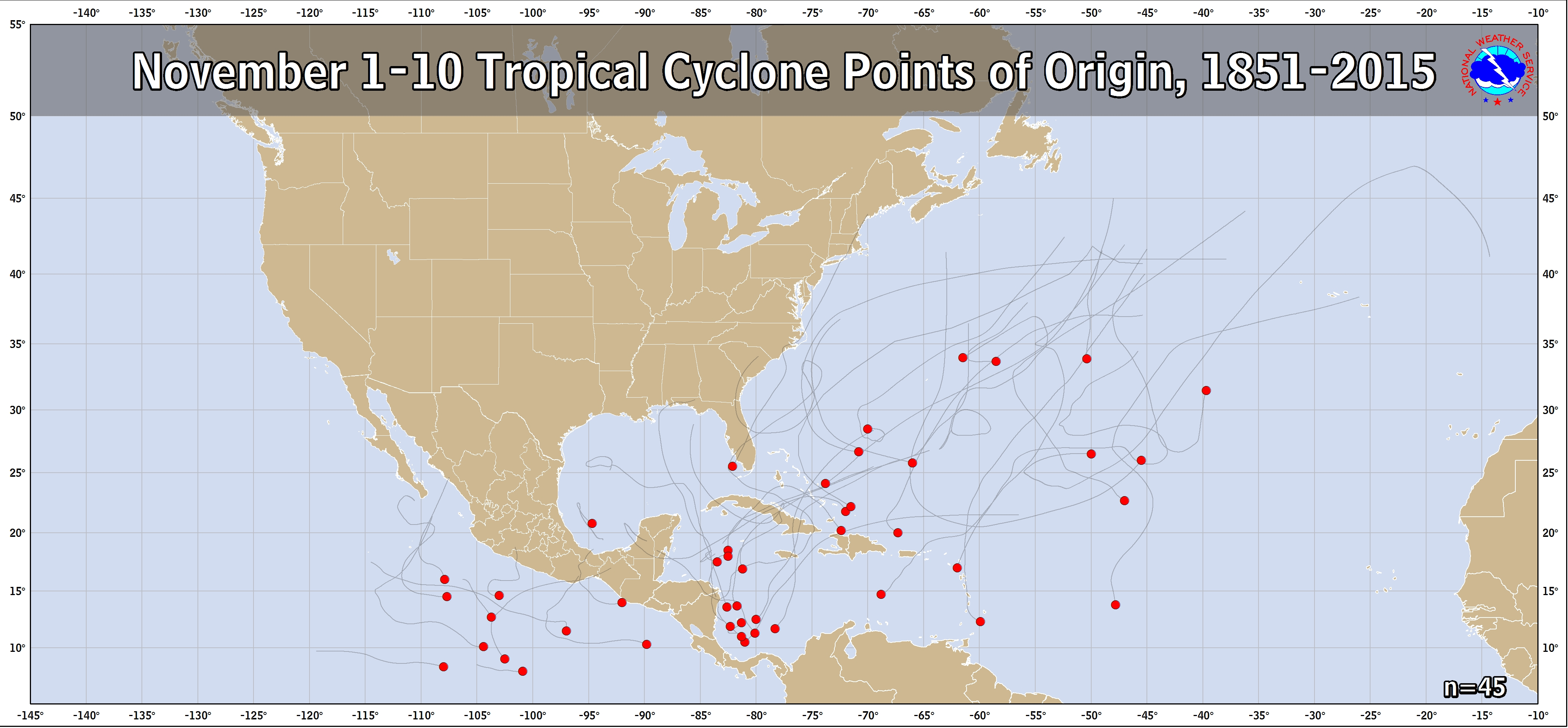
Atlantic Basin wave forecast for 24, 48 & 72 hours respectively:








:quality(70)/cloudfront-us-east-1.images.arcpublishing.com/cmg/WW5AJL3ARQUGDQMAQUNSFX4CLE.jpg)
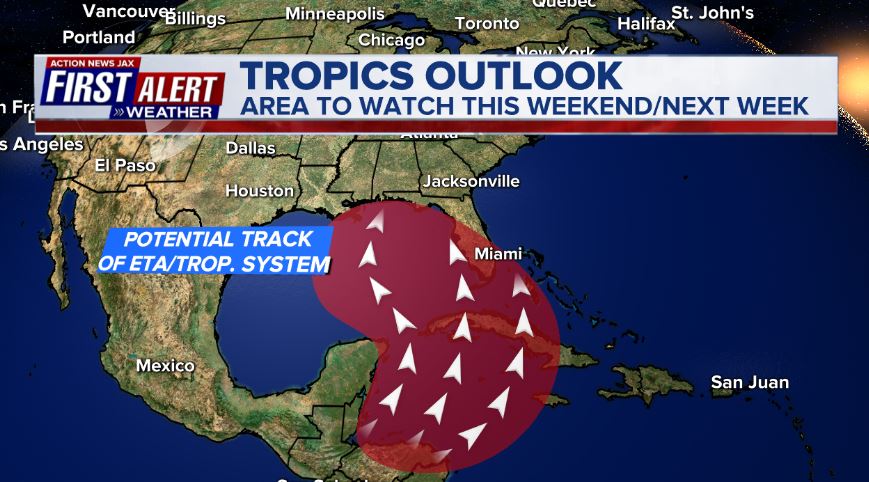

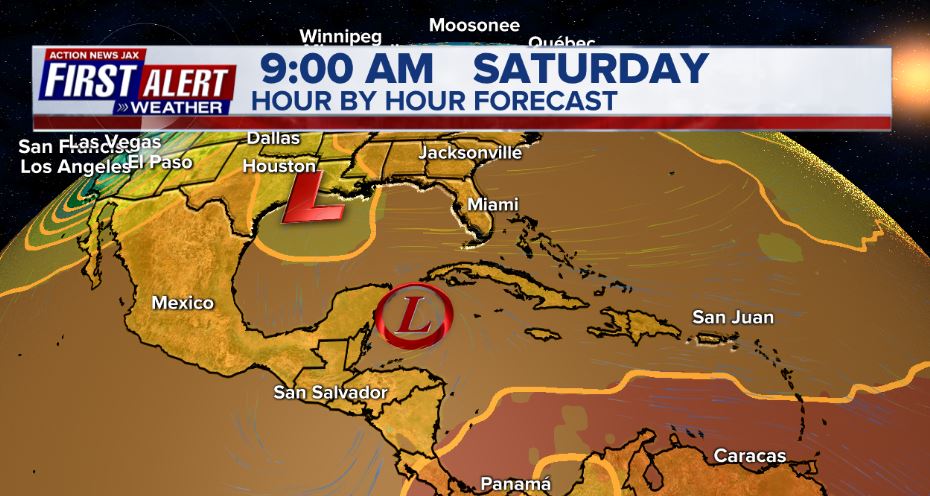
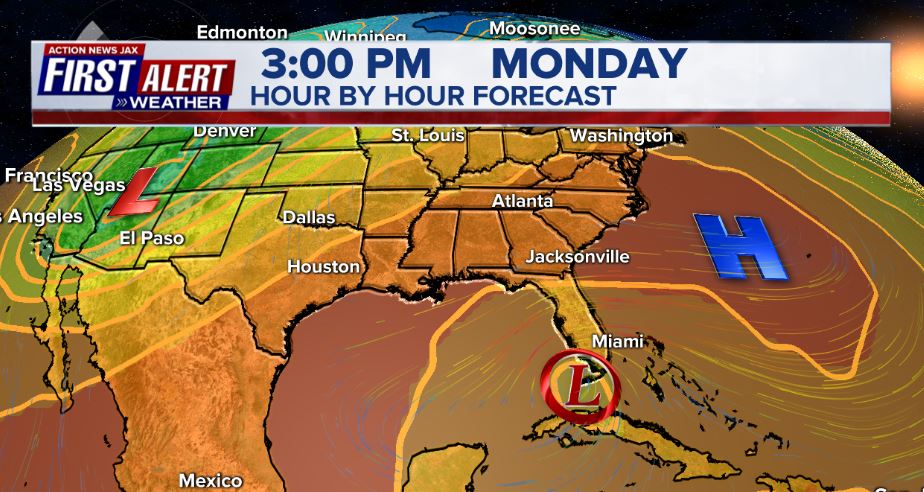
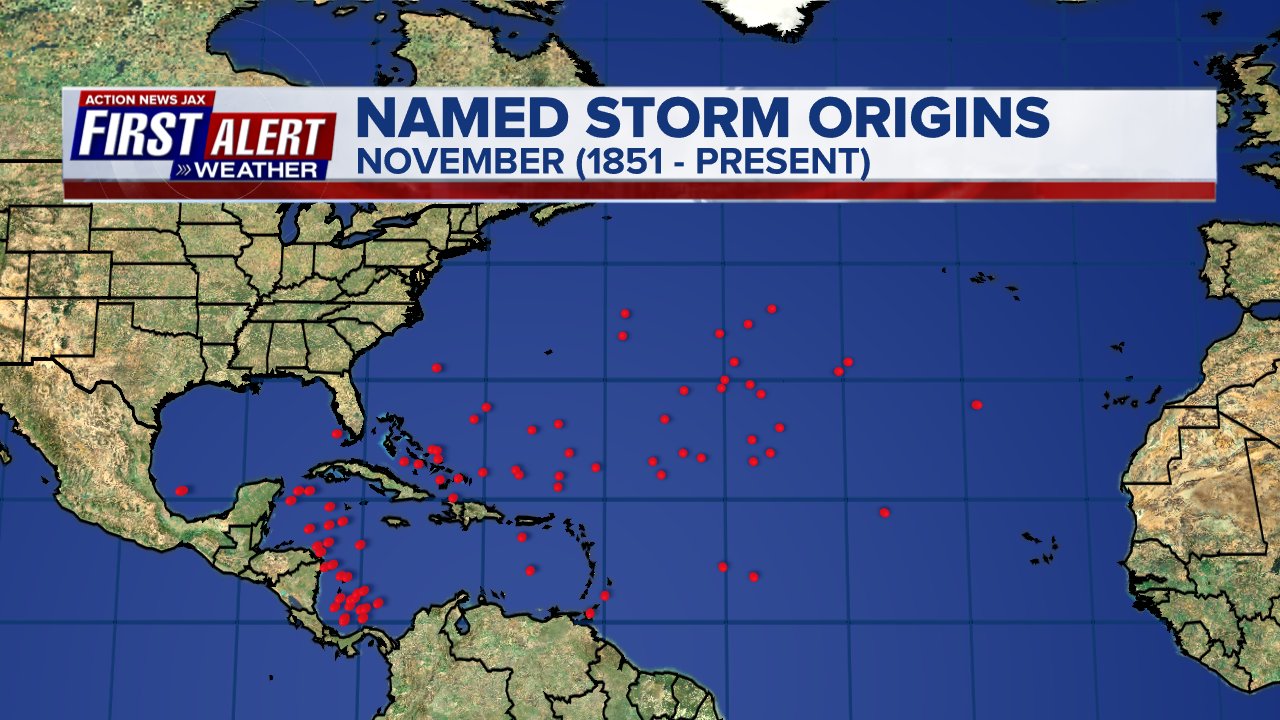
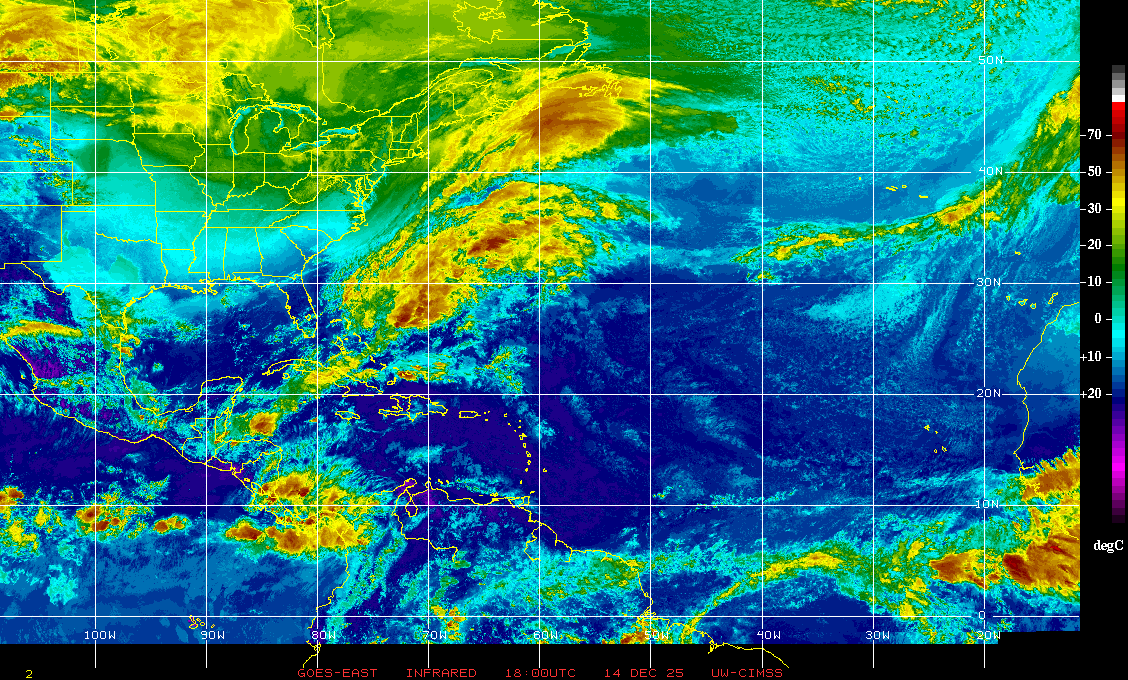

















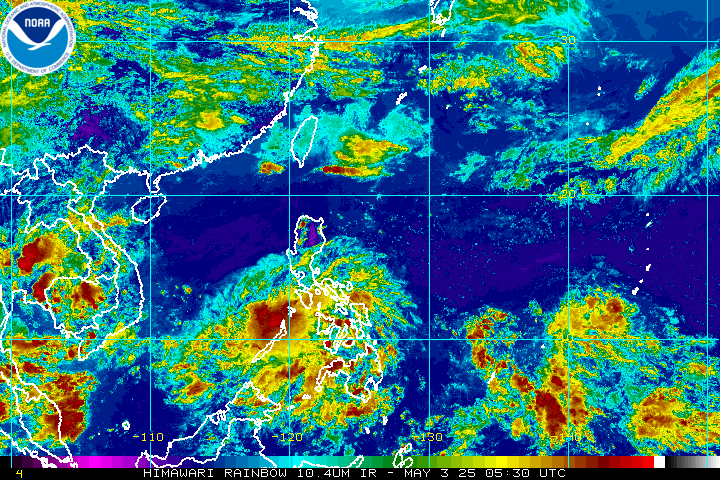


:quality(70)/d1hfln2sfez66z.cloudfront.net/04-19-2024/t_cce5cdc2bce2491e9ddd093667b9e4a9_name_file_960x540_1200_v3_1_.jpg)
:quality(70)/cloudfront-us-east-1.images.arcpublishing.com/cmg/N7YMXJTJYJEFBCXSUI6KPLO7OM.png)
:quality(70)/cloudfront-us-east-1.images.arcpublishing.com/cmg/SKFDOR2IYNE4NDKFR6PGKELN3E.png)
:quality(70)/cloudfront-us-east-1.images.arcpublishing.com/cmg/NQCTWRA7OVFP5ABEQBTBAG2E3A.jpg)
:quality(70)/d1hfln2sfez66z.cloudfront.net/04-18-2024/t_1f723bd2aba44712a670380695ecffbf_name_file_960x540_1200_v3_1_.jpg)